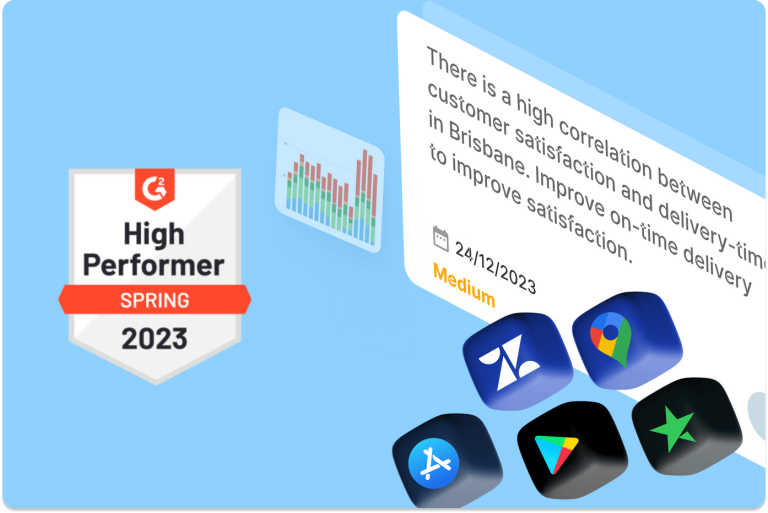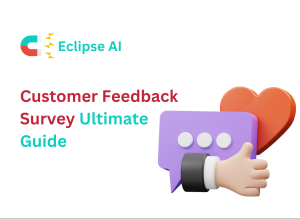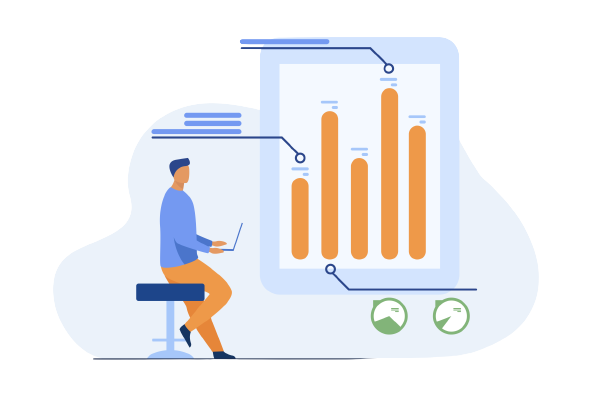
How to embed a survey in an email – Short Guide
Struggling with low survey response rates? Learn how to embed surveys directly in your email for a seamless experience and boost engagement! This guide covers everything you need to know.

In today’s fiercely competitive business landscape, success hinges on understanding and satisfying customers. Voice of Customer (VoC) analytics is a powerful tool that can help businesses gain valuable insights into customer preferences, needs, and opinions. In this comprehensive guide, we’ll explore what VoC analytics is, why it matters, how it’s analysed, and why companies need to invest in VoC solutions.
Voice of Customer, often abbreviated as VoC, is a methodology that collects and analyzes customer feedback, opinions, and sentiments to gain insights into their preferences, experiences, and expectations. It serves as a direct channel for customers to express their thoughts about a product, service, or overall experience with a brand.
VoC data is invaluable because it helps companies understand and anticipate customer needs. By listening to the customer’s voice, businesses can make data-driven decisions and drive improvements that result in higher customer satisfaction and loyalty.
VoC data can be gathered from a multitude of sources, including:
Social Media:Monitoring social media platforms for mentions, comments, and reviews provides a wealth of unsolicited customer feedback.
Real-world Example: Apple’s Genius Bar offers an excellent example of in-store VoC collection. Apple’s technicians gather feedback from customers during support interactions, which helps the company continuously improve its products and services.
Analyzing VoC data isn’t just about collecting feedback; it’s about extracting actionable insights. Here are some key reasons why businesses need to analyze VoC data:
Analyzing VoC data involves several steps and techniques to extract meaningful insights:
Data Collection and Integration As mentioned earlier, VoC data is collected from various sources. It needs to be aggregated and integrated into a centralized database for analysis.
Forget about reading through thousands of voice of customer data points.
Let our AI-powered ‘Insight Assistant’ flag the issues that matter so you can work faster, boost productivity, and save more time.
In an era where customers have abundant choices and can quickly voice their opinions online, investing in VoC solutions is a strategic imperative for companies. Here’s why:
While VoC analytics offers numerous benefits, it’s not without its challenges. These include:
Dealing with vast amounts of unstructured data from diverse sources can be overwhelming without the right tools and processes.
Data privacy regulations, such as GDPR and CCPA, must be adhered to when collecting and analyzing customer data.
Ensuring data accuracy and avoiding bias in analysis is crucial for reliable insights.
VoC analysis should be an ongoing process, as customer preferences and market conditions evolve.
Voice of Customer (VoC) analytics is not just a trendy buzzword but a proven strategy for achieving a competitive advantage. Companies that prioritize VoC data collection and analysis gain a deeper understanding of customer preferences and experiences, which, in turn, allows them to make data-driven decisions, enhance the customer experience, and drive innovation. The success stories of companies like Apple, Netflix, British Airways, and Amazon underscore the real-world value of VoC analytics. By actively listening to customers, implementing effective VoC solutions, and acting on feedback, businesses can secure their position in an ever-evolving and highly competitive market.
Investing in VoC solutions is an investment in the future of your business. Your customers are talking; it’s time to listen and turn their voices into a competitive advantage.
Want The Latest CX Intelligence?
Analyse all your voice of customer data in one place and empower your teams with actionable insights that help them understand the true voice of your customers.
✔Free forever ✔ No credit card needed ✔ Reduce Churn


Struggling with low survey response rates? Learn how to embed surveys directly in your email for a seamless experience and boost engagement! This guide covers everything you need to know.

Discover why your customer acquisition strategy is failing and learn actionable solutions to turn it around. Explore common pitfalls and effective tactics to attract, retain, and convert prospects into loyal customers for sustainable business growth.

Effective customer feedback surveys are a cornerstone for any business aiming to thrive. But how do you design a survey that cuts through the noise, engages your audience, and delivers actionable insights?
Don’t Let Your Competitors Understand Your Customers Better Than You
Don’t miss out. Try our 30-day Free Professional Trial.
